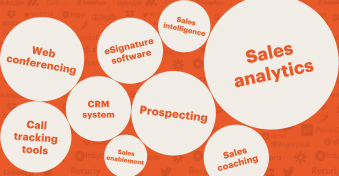When most people think of pop-ups, they think of unrelated advertisements that appear while they’re in the middle of reading something.
But that’s not all they can be! Used effectively, they can be a great way to generate more sales and draw your customers in.
But how can you use them effectively? Here are a few initial tips.
How to use pop-ups effectively
1. Place them in context
Pop-ups should always relate to the page on which they appear. If someone is browsing a site dedicated to team collaboration software and a pop-up about a telesales ebook appears, they’re almost certainly going to be frustrated.
They might go beyond closing the pop-up and closing the whole site.
Instead, try to ensure any pop-up is directly relevant. For instance, when they add it to their basket, a popup requesting their email address to sign up for a tutorial call about the software could appear.
2. Make them worthwhile
A customer has to have a good reason to engage with a pop-up ad. That means it needs to offer something of value. If your pop-up only offers information, it’s likely to be ignored. Try to make it worthwhile.
Adding a discount code is a good example of this, but not the only one. We’ll give you some more examples shortly!
3. Keep them quick
Even when they’re worthwhile and engaging, pop-ups are still taking the customer’s attention off what they were originally viewing. Make them quick and easy to understand at a glance.
That way, it’ll either capture their attention or they’ll be able to acknowledge it without getting distracted from their original goal.
4. Make them easy to exit
We’ve all encountered them – pop-ups with no clear way of closing. Make sure there’s an easy-to-see (and click!) way to close the pop-up.
This may seem counterintuitive to your goal of wanting people to engage, but it ensures you don’t lose the customers who aren’t interested. A pop-up should only ever increase sales, not risk people leaving the site entirely.
5. Only show them once
Pop-ups should be highly targeted, and they definitely shouldn’t be showing up multiple times. If the same pop-up appears every time a customer clicks through to a new page, they’re quickly going to lose interest.
Instead, make sure they’re only in use at the most important points. That often means on your homepage, certain product pages, and the cart.
6. Personalize them
The more you can personalize the pop-up, the better.
There are lots of factors you can use for this. If someone has followed a link from a particular search term, or from a certain social media marketing campaign, you can use a pop-up related directly to that.
Or, you can show offers specifically available to them according to their country of residence – many restaurants do this to show local deals. You can even trigger pop-up based on how long someone has been on a certain page.
With these tips in mind, let’s take a look at eight ways you can use pop-ups to generate more sales.
Ways you can use pop-ups to generate more sales
1. First-time purchase offers
Many sites use first-time offers as a way to finalize a sale and gain information about a customer at the same time.
Rather than waiting for people viewing the site to add things to their basket, these are best delivered a couple of seconds after opening the page.
Ideally, they shouldn’t take up the whole page, but they should be eye-catching and targeted.
As mentioned, these can be targeted based on the way the customer has come across the page, or simply related to your current offers or featured products.
The simplest way of presenting such pop-ups is to request an email in exchange for a discount code.
Below is an example from the furniture store, Made. This has an appealing image, a clear offer, and is simple to complete.
It also appears in the bottom left corner of the screen – meaning it doesn’t block the customer’s ability to browse the site.
2. Location-based pop-ups
As mentioned earlier, you can target your pop-ups based on location. This is particularly useful for businesses that have a local presence, rather than being solely based online.
A lot of take-out restaurants will use this to draw customers to the correct menu for their location or to highlight delivery times.
In this case, the pop-ups aren’t necessarily going to gather information like emails, or even push a particular product, but are instead aimed at making things more convenient.
Imagine a customer journey mapping template. Between entering the website and placing an order, the customer has to learn some things.
They must look around to find out if their address is in the delivery range, what menu their local franchise uses, and how to order from their local place.
You can shorten this journey via a location-based pop-up. A shorter journey means the customer will find the experience intuitive, and that means an increased chance of them converting to a sale.
The above appears in the top left corner of your browser when you load the McDonald’s website, requesting access to your location.
If you allow it, it then shows you the appropriate information for where you’re based.
3. Cross-sell/upsell
Many businesses find it can be harder to cross-sell or upsell through a website, rather than in-person or on the phone. However, pop-ups are a great way to do this.
Take a look at the one below, in which adding a soft toy to your basket on Argos recommends further products.
This is a perfect example, as the soft toy added requires batteries and the pop makes it easy to add these to your trolley without having to search for them separately.
4. Exit pop-ups
Even if you don’t make a sale, you can gather information to turn your leads into conversions later. Exit pop-ups are a great way to find out what might be putting people off your site.
These are triggered when someone goes to leave the webpage. It’s important to note that they’re not intended to block people leaving the page, just to catch their eye on the way out.
Alternatively, you can try to catch their attention with an offer. This is particularly helpful if they’ve already added something to their basket, which brings us to abandoned cart offers.
Many online businesses find they have quite a high cart abandonment rate. One way to counter this is to use exit pop-ups specifically designed for people leaving a cart with items in it.
Often, the reason people leave abandoned carts is the shipping cost. So, an easy, attention-grabbing offer would be free shipping.
This can even be combined with a bit of upselling by having free shipping above a certain amount (especially effective if they’re close to that amount already!)
5. Time-limited offers
You can add a sense of urgency to your customers by having time-limited offers available.
By adding a sense of urgency to discounts, you can encourage people to purchase something immediately.
Whereas they may previously have added it to their basket, decided to return, and forgotten about it. You can reinforce this by having the same information in an exit/cart abandonment pop-up too.
These can be used all year round – although, if the offers are very similar, repeat customers will catch on. Time-limited offers, therefore, are particularly efficient around the holidays.
Christmas, New Year, Thanksgiving, and Black Friday/Cyber Monday often drive high amounts of customers to websites. Capitalizing on the pre-existing urgency around these events can really help increase your sales for that quarter.
6. Newsletter or account sign-ups
As well as trying to directly generate sales, you can also focus on bringing in new leads. These would be ‘warm’ leads, as they’ve already expressed some interest.
The best way to do this is to have an easy way to sign up for a newsletter. As seen above, some websites do this as a way of accessing a special offer, whilst others just ask directly.
The above, taken from the website for Ophir Gin, allows you to customize your subscription while signing up.
This is a great way to help categorize your leads, as you can use the information gathered through this pop-up to target them with specifically suited offers or updates.
Similar to newsletter sign-ups are account sign-ups. However, these go beyond merely taking an email and adding it to an updated list.
Instead, they encourage the customer to sign up to the website. These are best applied during the checkout process, like the one below.
You can see from this one that it includes an opt-in to the newsletter, and also links explaining the benefits of registering.
If you click through why register?, you’re taken to a new page detailing the benefits. However, one of these benefits is already mentioned on the pop-up itself – the offer of 100 points.
Pop-ups that contain loyalty systems, like points, are a good way of converting sales into sign-ups, as they offer a tangible benefit for doing so.
They also encourage repeat customers. If you’re likely to get points towards money off from a certain website, you’ll be more inclined to use it than somewhere new.
7. Exclusive content
Both of the above types of pop-ups can be combined with this one, too. Exclusive content pop-ups are less applicable to traditional retail sites but very useful for blogs, and businesses selling training courses, ebooks, or software.
Usually, they offer something that can only be accessed by signing up for a newsletter. Rather than a discount code, it’s often a product in its own right.
For instance, if you’re selling HR software, you could offer an ebook about digitalizing HR departments or other related topics.
This is another great way of getting leads, because not only do they sign up for future updates, but you can also provide them with a sample of what you do.
8. Chatbot/messenger pop-ups
You can also make more interactive pop-ups, which are perfect for helping send your customers in the right direction.
Making use of chatbots and instant messaging, you can present the customer with a question, followed by some options.
This pop-up allows you to target specifically based on customer responses, rather than assumptions from their browsing. If you select one of the options, you’ll be updated with further responses.
Doing this helps the customer avoid having to look through the website to figure out their needs themself. Instead, it places them instantly in the hands of customer support.
This can be particularly helpful if you offer a lot of services, and if you’ve found that you often get questions during the purchasing process anyway. You can even link it to an auto-scheduling service to set up an online video call to cement the sale.
What next?
If these ideas have grabbed your attention, it’s time to try one of them on your own website. Rather than overwhelming new customers with lots of pop-ups and overlays, it’s worth testing out one or two at a time.
A good starting combination is the first-time purchase offer and a newsletter sign-up. These are particularly useful as you can directly measure their impact through the use of the discount code and new email sign-ups.
Whatever you do, make sure to remember that pop-ups should enhance a customer’s experience of a website, not hinder it.


